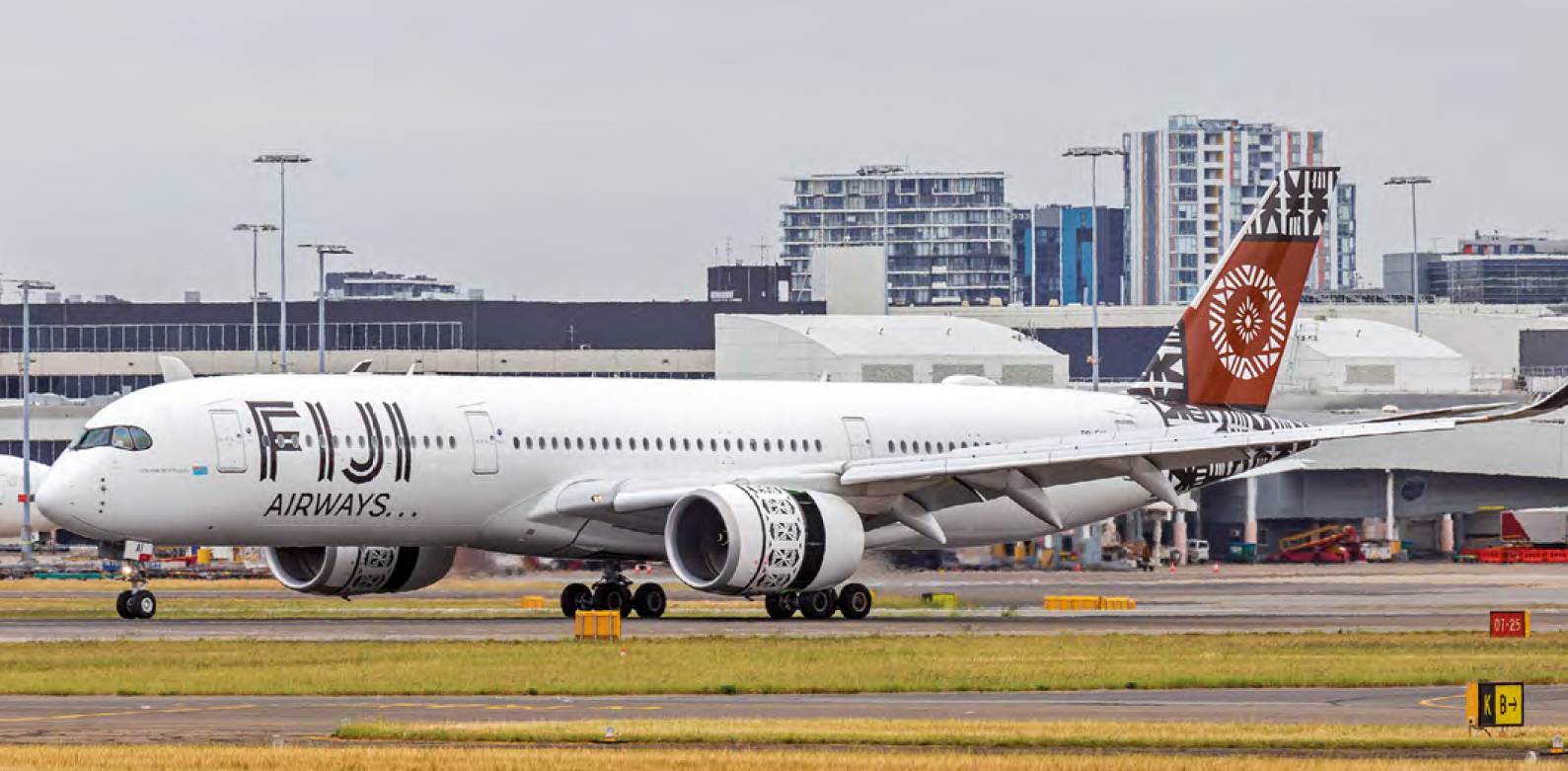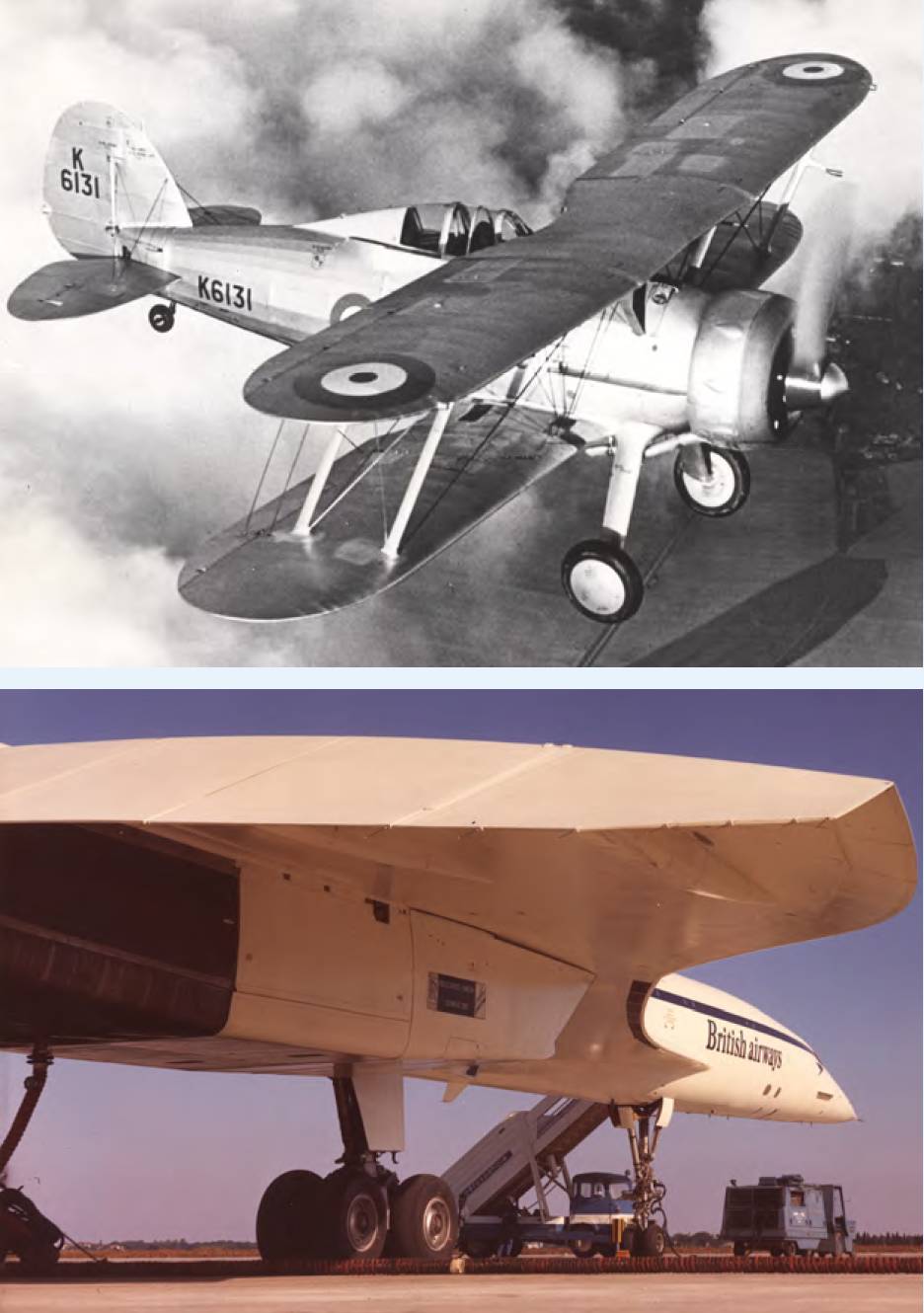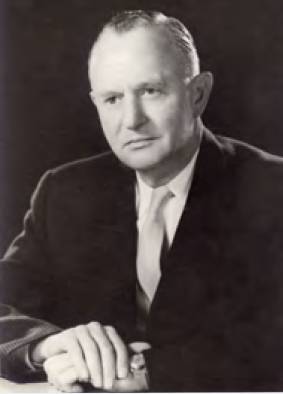Book Reviews
Mentor Aviation Services, 2019, 377pp, £19.80.
 Airbus A350-941, DQ-FAI, of Fiji Airways at Sydney Airport. On 2 May 2019 Fiji Airways announced its intention to lease two Airbus A350 900s from Dubai Aerospace Enterprise as a part of its fleet expansion. Bidgee.
Airbus A350-941, DQ-FAI, of Fiji Airways at Sydney Airport. On 2 May 2019 Fiji Airways announced its intention to lease two Airbus A350 900s from Dubai Aerospace Enterprise as a part of its fleet expansion. Bidgee.
This book offers a perspective memoir on Fiji from several angles. Of interest to RAeS members will, of course, be stories of Fiji Airways and Air Pacific, featuring aircraft such as the HS748, Trislander, Heron, DC-3 and BAC 111 at Fiji Airways, and the ATR42, B737, B767 and B747 at Air Pacific. Operating small fleets in distant lands is fraught with difficulties and there are not too many places more remote and isolated than Fiji. There are many anecdotes from both operations which will tickle the memories of those who have seen similar remote airline operations. Also of interest on the airline side is the technical and management support provided to Air Pacific by then part-owner Qantas Airways. There are some candid assessments from this former CEO of both airlines of relations between the Fijian airlines and Qantas, other Pacific Island national carriers and, of course, the political situation during and after the military coups in Fiji.
However, there is a lot more to this memoir than just the aviation side. The author spent most of his childhood in Fiji, at a time when Fiji was moving from a colonial outpost of the British Empire to self rule and independence. His insights into the tensions which surrounded these important changes ring true for many people in similar circumstances in former colonies. The author’s obvious admiration and appreciation of the native Fijians shines right through this book. He describes the Fijian humour as “unique and plays a large part in defining our people.” Equally his descriptions of the idyllic lifestyle as he grew up in Fiji paint a picture of a time and lifestyle which is much harder to find in today’s world.
Those of you who remember the renowned movie Blue Lagoon starring Brooke Shields will be interested to hear it was filmed in the Fijian Yasawa Islands, as was the earlier version of the film. The author of this book was CEO of Blue Lagoon Cruises between his stints at Fiji Airways and Air Pacific, and shares some marvellous anecdotes of his experience in learning the ropes of tourism, sales and marketing after having started out as a licensed engineer. Blue Lagoon Cruises even built some of its fleet in Fiji.
This memoir provides some fascinating insights into the fledgling aviation and tourism industry in Fiji. There is something here for everyone, whether you are a pilot, engineer or other professional aviation person, or from the boat cruise industry, government or colonial administration. However, it is much more than just these anecdotal tales. It contains an intimate and personal story of life in an idyllic Pacific Island nation, during a time when it is transforming from a British colony to a proud and independent nation. It has an underlying social commentary on a gentle and peaceful people with a friendly personality, impish humour and a nostalgia for a simpler world that is no longer.
David Forsyth
FRAeS
The Hobnob Press, Gloucester, 2020, £9.95.
 Top: The third production Gloster Gladiator I, K6131. The Gladiator used a cantilever landing gear strut to take advantage of the Dowty internally sprung wheel. Above: Concorde 102, F-WTSA, displays its Messier-Dowty main undercarriage.
Top: The third production Gloster Gladiator I, K6131. The Gladiator used a cantilever landing gear strut to take advantage of the Dowty internally sprung wheel. Above: Concorde 102, F-WTSA, displays its Messier-Dowty main undercarriage.
Books about the UK aerospace equipment industries are relatively sparse in number; an autobiography by one of its most illustrious names is therefore quite a treat. The Dowty name, now buried in a French-owned aerospace multinational, is unquestionably one full of historical resonance. This is not a polished, illustrated volume but his son’s record based on a typed manuscript from 1975, written just before Sir George’s death in 1975. It is a fascinating read nonetheless and adds personal reminisces to Rolt’s two-book Dowty story.

